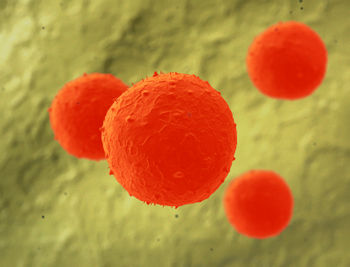 |
Northwestern Medicine researchers have launched a clinical trial testing a new combination of treadmill exercise and drug regimen to see if the two together improve the walking ability of people with peripheral arterial disease (PAD) more than either therapy individually. Scientists are studying if a combination of walking and the medication together increase the production of a participant’s own stem cells, and, ultimately, the development of greatly needed new blood vessels in the calf muscles.
People with PAD – about 8 million in the United States – develop blockages in their arteries that slow or stop the blood flow to their legs. As a result, they have pain and difficulty walking even short distances. Few effective therapies are available to prevent mobility loss in patients with PAD.
“This is a painful, disabling disease,” said lead investigator Mary McDermott, MD, professor of medicine at Northwestern University Feinberg School of Medicine and a physician at Northwestern Memorial Hospital. “Many people with PAD have to restrict their activities and can’t do such basic things as going grocery shopping or on a family outing because it hurts too much to walk.”
“This study is particularly important because there really isn’t any good treatment to help these people,” McDermott added.
In the National Institutes of Health-funded trial, Northwestern Medicine researchers will give participants subcutaneous injections of a drug that boosts the level of circulating stem cells, called progenitor stem cells. These circulating stem cells can help form new blood vessels to the legs that improve blood flow to calf skeletal muscle and potentially improve walking ability in people with PAD. People with PAD have lower levels of circulating progenitor stem cells than individuals who do not have it.
In addition to the primary goal of determining whether the dual therapies are most effective, the study also will provide new information about how walking and the drug therapy individually affect artery health throughout the body as well as changes in the stem cell levels over time.
Preliminary evidence from previous studies shows that increasing the circulating levels of the progenitor stem cells may improve walking ability in people with PAD. Three previous small clinical trials have tested whether a medication, granulocyte macrophage colony stimulating factor (GM-CSF), which increases circulating levels of these stem cells, improves walking ability in people with PAD. These previous studies have yielded mixed results. Whether GM-CSF can improve walking ability in patients with PAD is not definitively established.
Preliminary evidence also suggests that walking exercise may help to stimulate increases in circulating levels of stem cells and encourage their deposition in calf muscles that are affected by PAD.
The new randomized, controlled clinical trial is the first to test whether the combination of GM-CSF and supervised exercise can improve walking ability better than GM-CSF alone or supervised exercise alone in patients with PAD. The trial will include 240 participants with PAD who will be randomized to one of four study arms: a) GM-CSF and supervised exercise therapy; b) GM-CSF therapy and weekly health education sessions; c) placebo and supervised exercise therapy; and d) placebo and health education sessions. Study participants will be followed for six months. The study seeks to recruit 240 participants.
For information contact: mdm608@northwestern.edu or 312-503-6419.
Members of the media, please contact Marla Paul via e-mail or at (312) 503-8928 for more information about this story.






